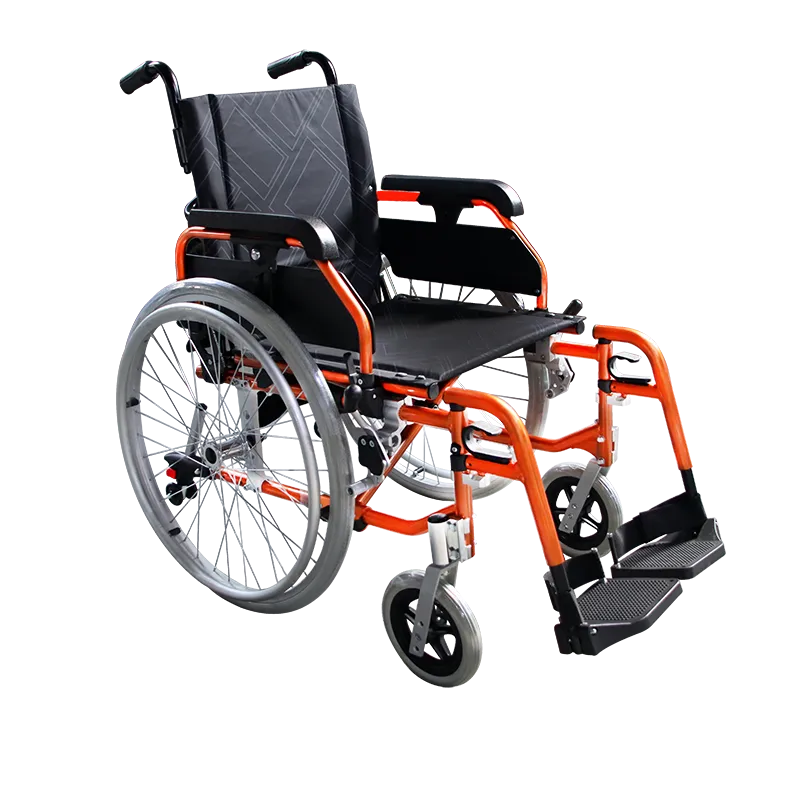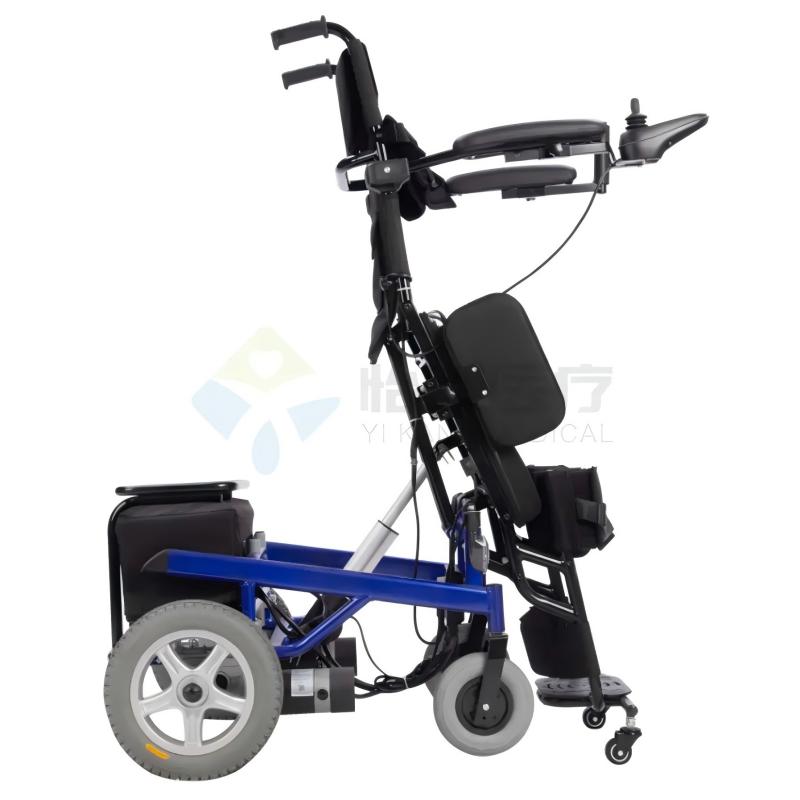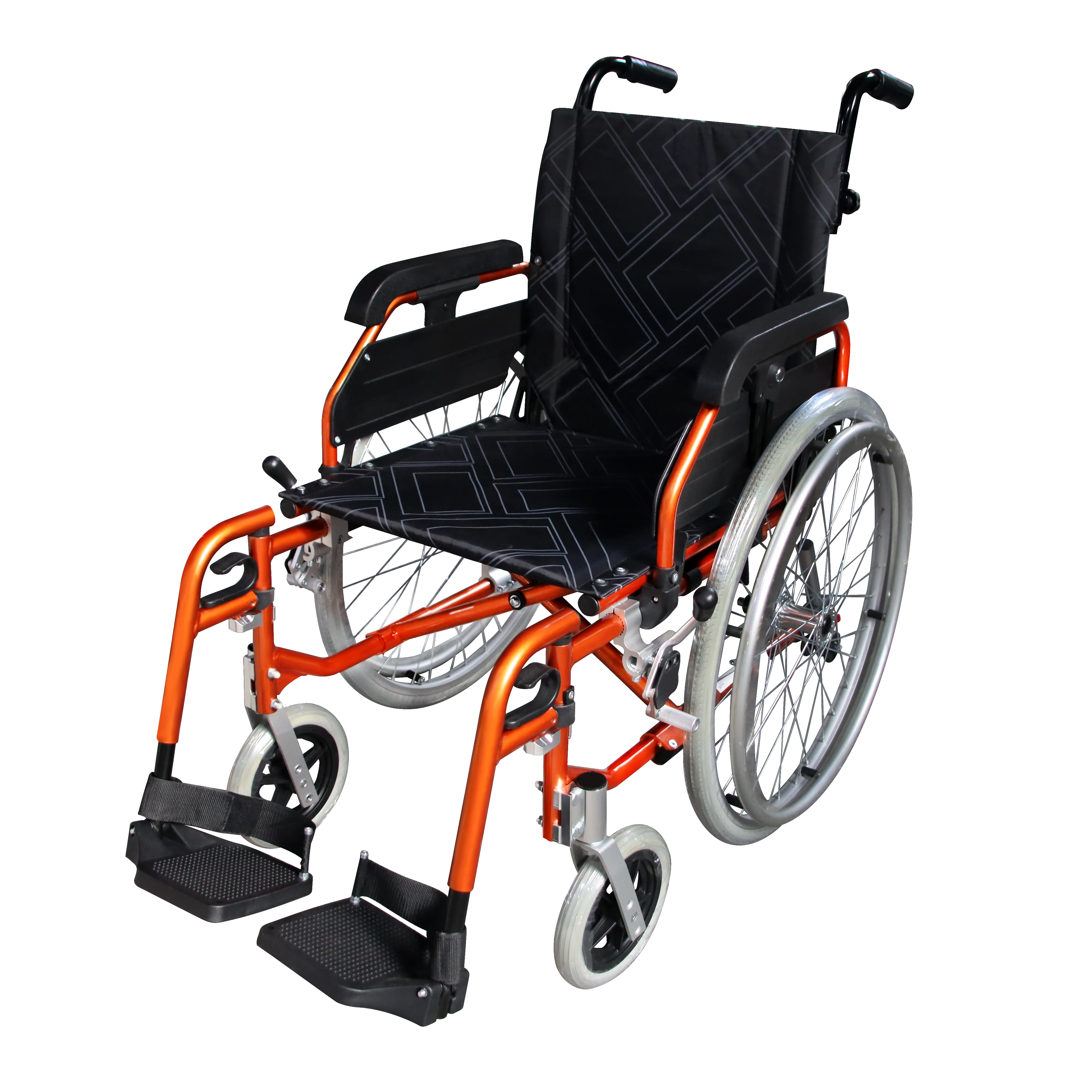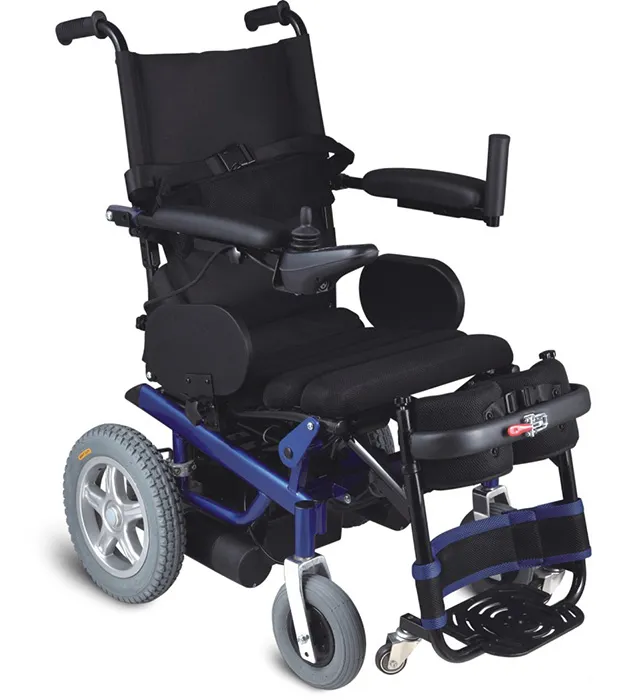In today's increasingly diverse medical rehabilitation assistive devices, it is particularly important to choose a wheelchair that suits your needs. For consumers or caregivers who are new to wheelchair products, "Should I buy a manual wheelchair or an electric wheelchair?" has become one of the most common and core questions in purchasing decisions.
"Manual wheelchairs" and "electric wheel chairs" are the two main categories of wheelchair products. They differ significantly in terms of drive mode, structural design, applicable population, usage intensity, and cost investment.
This article will systematically sort out this issue and provide a clear structure, detailed information, and professional and authoritative analysis to help readers make rational decisions.

What is a manual wheelchair?
A manual wheelchair is a non-electric wheelchair that is moved by the user or caregiver by pushing the wheels. It is generally composed of wheel rims, hand push rings, seat back cushions, foot pedals, etc. Manual wheel chairs are suitable for patients with good upper limb strength or with caregivers to assist in use.
Key features:
·No need for power support;
·Simple structure;
·Relatively light weight;
·Easy to fold (most models);
·Low maintenance cost.
What is an electric wheelchair?
Electric wheelchairs are driven by motors and powered by batteries. They are controlled by joysticks or control systems to move forward, backward, turn, etc. Suitable for users with severe mobility restrictions or long-term travel needs.
Key features:
·Electric drive;
·Precise control system;
·Suitable for long-term independent use;
·Strong ability to adapt to complex terrain;
·Heavier and more expensive.

Manual wheelchairs and electric wheelchairs: What is the difference in driving mode?
1. Human-powered driving mechanism of manual wheelchairs
The driving mode of manual wheel chairs relies on the user's own physical strength, especially the upper limb strength or the assistance of others. For users with good upper limb control, they can achieve relatively free daily travel.
Advantages of manual wheelchairs:
·High controllability and simple structure;
·Easy to fold and store;
·Zero dependence on electricity.
Limitations of manual wheel chairs:
·Long-term pushing consumes a lot of physical effort;
·Difficult to use on uphill or uneven ground;
·Not suitable for severely disabled or extremely weak users.
2. Electric drive system of electric wheel chairs
The travel of electric wheelchairs is completely dependent on the motor, and users only need to move the joystick to complete the direction and speed control. Its built-in battery capacity and the torque of the drive motor determine its endurance and power performance.
Advantages of electric wheelchairs:
·Almost no physical effort is required;
·Easy to achieve independent living;
·Adapt to various terrains, such as ramps, floor tiles, etc.;
·The control system can customize the speed mode, steering sensitivity, etc.
Limitations of electric wheelchairs:
·High price;
·Heavy equipment, difficult to carry;
·Requires regular charging and battery maintenance.
Manual wheelchairs and power wheel chairs: What is the difference in structure?
In terms of structural design and functional positioning, manual wheel chairs and power wheel chairs show two completely different engineering logics.
1. Simple structure and adaptability of manual wheelchairs
The structure of manual wheelchairs is relatively standardized, with simplicity and lightness as the core goals. Most models are foldable, making them easy to carry, store or use outside.
Common structural features:
· X-shaped cross-folding frame;
· Removable armrests and footrests;
· Some are equipped with anti-tilt wheels and shock absorption systems.
· Limited functional extension, mainly meeting daily short-distance activities, such as at home, in the hospital, etc.
2. Complex structure and control system of power wheel chairs
Electric wheelchairs are more complex in structure and usually include the following modules:
· Control system (joystick, screen or button);
· Battery system;
· Motor and transmission system;
· Suspension structure and shock absorber;
· Adjustable seat (some high-end models support reclining and lifting functions).
This type of wheelchair can cope with more complex usage scenarios, such as municipal roads, commercial spaces or outdoor road conditions.

Who is more suitable for manual wheelchairs and who should choose power wheel chairs?
1. People who are suitable for manual wheelchairs
·People with sound upper limb strength;
·People with temporary mobility difficulties (such as postoperative rehabilitation);
·People who can be pushed for a long time by caregivers;
·People who need wheelchair assistance in the short term;
·People who have high requirements for portability.
Manual wheelchairs are suitable for people with mild or moderate mobility difficulties, as well as for use during the rehabilitation period or in specific scenarios (such as hospital transfer).
2. People who are suitable for electric wheel chairs
·People with insufficient upper limbs or overall physical strength;
·People who need to travel independently for a long time and long distances;
·People whose living environment requires more ample space for passage;
·People who have higher requirements for life autonomy;
·People who lack fixed care resources.
Electric wheelchairs are more suitable for people with moderate to severe disabilities, or elderly people and patients with chronic diseases who rely on wheelchairs for a long time and want to maintain their mobility autonomy.
Manual wheelchairs and electric wheelchairs: Which one is cheaper?
1. The cost of a manual wheelchair
·Low purchase cost, generally priced between $100 and $800;
·Low maintenance cost;
·Easier to obtain spare parts, low maintenance technical threshold;
·Low transportation and logistics costs.
Suitable for budget-limited or short-term use needs.
2. The cost of an electric wheelchair
·Expensive, generally between $1,200 and $6,000, and even higher for high-end products;
·Regular battery replacement requires additional costs;
·High maintenance costs for motor systems, controllers, etc.;
·Strong after-sales dependence.
Suitable for groups with sufficient budgets or long-term use.
Manual wheelchairs vs. power wheel chairs: Which is more portable?
1. The portable advantage of a manual wheelchair
·Lightweight design, average weight of 12-18 kg;
·Foldable frame, suitable for private car trunk or home storage;
·No need to rely on power, more flexible when going out.
2. Challenges of carrying and storing electric wheelchairs
·The average weight is over 25–60 kg;
·Most do not support quick folding and need to be carried with auxiliary equipment;
·Storage needs to consider the charging location and waterproof and dustproof conditions;
·Air travel needs to be declared in advance.
Manual wheelchairs and electric wheelchairs: Which one has a better control experience?
The experience of manual wheel chairs and electric wheelchairs in daily use is significantly different, mainly reflected in the degree of freedom, fatigue, and ability to cope with complex environments.
1. Experience of using a manual wheelchair
·Flexible control and timely response;
·Weak terrain adaptability, easy to slip or jam on uneven roads;
·Long-term operation may cause upper limb fatigue;
·Suitable for relatively flat environments such as indoors and short distances.
2. Experience of using an electric wheelchair
·Easy to control, push the pointer lightly to move;
·Strong terrain adaptability, supports ups and downslopes, brick joints, grass and other ground surfaces;
·Can be used continuously for a long time to reduce physical energy consumption;
·Beginners need to adapt to the control method.

Manual wheelchairs and electric wheelchairs: Which one should I buy?
For the question "Should I buy a manual wheelchair or an electric wheel chair?", the answer is not a simple "which one is better", but a decision should be made based on the following dimensions:
| Decision factors | Advantages of manual wheel chairs | Advantages of electric wheel chairs |
| 1. User's physical strength | Upper limbs are sound, suitable | People with weak physical strength or unable to push |
| 2. Frequency of use | Temporary use, short-term rehabilitation | Long-term use, daily life depends on wheelchairs |
| 3. Need to go out | Occasional going out, easy to carry | Frequent outings, strong adaptability |
| 4. Environmental restrictions | Indoor traffic is frequent, space is limited | Many outdoor activities, complex environments |
| 5. Economic budget | Budget is limited, basic products are sufficient | Sufficient budget, emphasis on comfort and independence |
| 6. Folding and transportation | Lightweight, foldable, easy to carry | Heavy, complex structure, suitable for fixed environments |
On the whole, manual wheelchairs are suitable for short-term users or users with care support; while power wheel chairs are more suitable for users who pursue independence, have limited physical conditions or go out frequently.
Looking for a Reliable Factory for Hospital Furniture in China?
Yikang Medical is located in Foshan, Guangdong, an industrial hub known for manufacturing excellence. As a leading supplier and factory, we specialize in hospital beds, wheelchairs, shower chairs, and walking aids. Our products come with safety certifications and affordable wholesale prices. We welcome global partners to visit our factory and start long-term cooperation.

